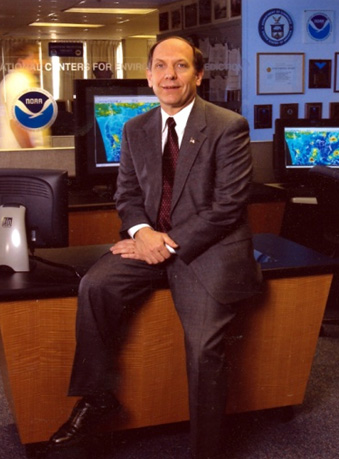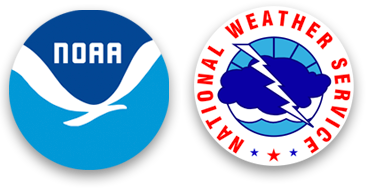Oral History: A Look Back with Dr. Louis W. Uccellini Part 3 - Hurricane Andrew and the Beginnings of NCEP - National Weather Service Heritage

Oral History: A Look Back with Dr. Louis W. Uccellini Part 3 - Hurricane Andrew and the Beginnings of NCEP
By Greg Romano (gregory.romano@noaa.gov)
Editor’s Note: Six oral history interviews were conducted with Louis W. Uccellini, Ph.D., Director of the National Weather Service, between June and October 2021. Dr. Uccellini retired from Federal service on January 2, 2022. This third interview was conducted remotely on August 19, 2021 by Greg Romano on behalf of the NWS Heritage Program.
In 1989, Dr. Louis W. Uccellini joined the National Weather Service as Chief of the Meteorological Operations Division (MOD) within the National Meteorological Center (NMC). During his tenure there, Category 5 Hurricane Andrew struck Florida in August 1992. At the time, it was the costliest hurricane to make landfall anywhere in the U.S. until Hurricane Katrina in 2005, and the storm devastated Homestead and other parts of South Florida before moving into the Gulf of Mexico and impacting New Orleans. In this third oral history with Dr. Uccellini, he recounts the operational structure of the NWS at the time, the new forecast models being used, the very real impacts to the NWS family, and the storm’s aftermath.
In this session, Dr. Uccellini also talks about the establishment of the NWS’ National Centers for Environmental Prediction (NCEP), an organization he led for 14 years, and the forecasting and technological advances made under his leadership. These included the expansion of computing systems to run the models, the emergence of ensemble modeling, and the “surprise” snowstorm that accelerated their implementation.
Here are excerpts from the interview recorded in August 2021:
On the lessons learned from Hurricane Andrew:
“Andrew was an important marker, one of these inflection points in the forecast process for hurricanes because this is where I believe models were now, the forecasters were allowed not only to look at the models but to start using them.”
On the early implementation of Decision Support Services by the National Hurricane Center:
“The Hurricane Center, even in the '90s, was doing a form of IDSS (Impact-based Decision Support Services), probably more so than any other component of the National Weather Service. [NHC Director] Bob Sheets did not believe the job was over with the issuance of a forecast and warning. The reason I say that is because the first time I met him, when I came on in 1989, and I might have met him like early 1990, I didn't even get a chance to say anything after I shook his hand and said, ‘I'm Louis Uccellini.’ ... He said hello, but then he said, ‘I hear you're coming in from NASA. Well, let me tell you, if you think the job is over with the forecast and warning and that there's not, and there's nothing else that you need to do, you know, go back to NASA.’”
On being interviewed by the media about the “surprise” snowstorm of 2000:
“I said, ‘Look, we were watching this thing like a hawk.’ Well, what winds up in a cartoon is ... the Weather Service office buried in snow ... he has this penguin buried with this hawk sort of perched on this snow-laden, crumpled-up radar system. And the hawk is saying to the penguin, ‘We're watching this thing like a hawk.’ And the penguin's responding back to him, ‘Well, let me know when the hawk gets here.’ ... I felt like I had to defend [the forecasters] ... but [you] also have to be careful in that defense. Not to be too flippant, number one, but also be careful in terms of making sure that the people understand the magnitude of what has to be done to elevate the whole forecast process and the models that are supporting that process and that we're in this for the long haul...”
Resources and Additional Reading
Full transcripts and audio recordings available here: https://voices.nmfs.noaa.gov/louis-w-uccellini
